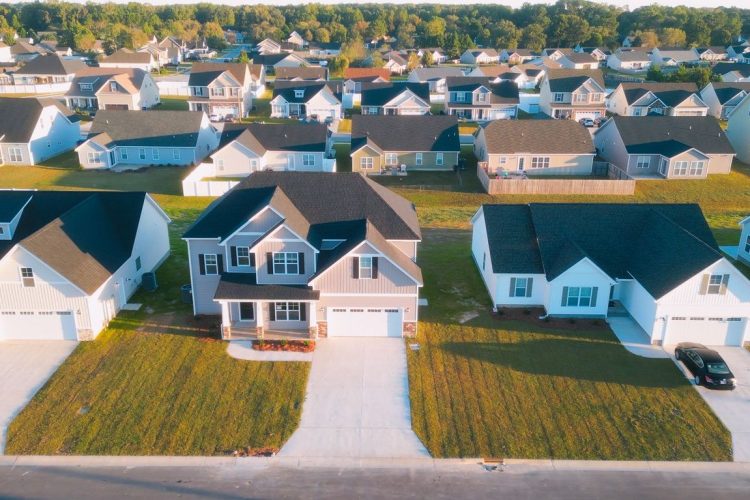The government remains shut down, and at least in some areas, housing markets are starting to show “early signs” of slowing activity, according to Realtor.com®’s October 2025 Monthly Housing Trends Report, which found that markets with the highest numbers of federal employees see “modest” impacts.
“At this stage, the housing market effects of the federal shutdown appear localized and modest,” said Danielle Hale, chief economist for Realtor.com in a statement. “(W)e’re seeing buyers take a brief step back as uncertainty persists. However, home prices and inventory trends in these areas continue to move in line with broader national and regional patterns, suggesting that the overall market remains steady for now.”
Impact of the government shutdown
Since shutting down on October 1, 2025, the government has yet to reopen. Unsurprisingly, it is the metro areas home to the largest number of federal employees, who won’t be paid until the shutdown ends, that show the clearest signs of a housing market slowdown. Affected metro areas identified in the report include:
- Washington, D.C. (11% of employed population is federal workers)
- Virginia Beach, Virginia (7%)
- Oklahoma City, Oklahoma (4.2%)
- Baltimore, Maryland (3.7%)
Comparing September to October, all four of these metro areas saw drops in new listings, which the report suggests means that buyers and sellers are more hesitant while the shutdown is in effect. However, other major trends such as list prices and inventory show little difference from national trends, which suggests that “local price stagnation is likely not due to the shutdown itself but rather broader housing market pressures,” per the report.
National housing trends in October 2025
Inventory continued to inch up across the U.S. during October—the number of active listings on the market grew annually by 15.3%, marking two years straight of inventory gains. The annual rate of national inventory growth, though, has slowed over the past six months, which could suggest a “plateau,” as the report put it. The number of newly listed homes rose 5.1% year-over-year but fell 2.7% month-over-month, aligned with seasonal trends, the report said.
Moreover, despite rising inventory and declining mortgage rates, buyer activity has not picked up. In October, a home spent an average of 63 days on the market, five days longer than in September, marking the 19th straight month where days on the market went up. The number of pending sales dropped annually by 1.9%, another indicator of slower buyer activity.
The median list price for a home in October was, per the report, $424,200, which was up slightly (0.4%) compared to last year but slightly lower (0.2%) than in September. Price per square foot was down 0.8% monthly and 0.5% annually. The other comparison the report invokes is to prices in 2019—since October 2019, list prices have climbed by 36.9%, while price-per-square-foot increased 49.8%.
“These long-term increases have significantly affected affordability even before the impact of higher mortgage rates is considered,” the report stated. Moreover, while inventory has increased by 46.1% since October 2022, the median list price has only fallen by 0.2%.
Zooming into an individual level, though, many sellers have been using price reductions. In October 2025, 20.2% of home listings had price reductions, up slightly (1.6%) annually.
Regional breakdown
Inventory levels fell below pre-pandemic norms in the Northeast (-48.6% in October) and the Midwest (-35.7%), whereas there have been modest gains in the South (+4.6%) and the West (+3.2%). This divergence continues to show in the metro areas of these regions.
The metro areas with the most inventory relative to before the pandemic were Denver, Colorado (57%); San Antonio, Texas (51.9%); and Austin, Texas (44.9%). The metro areas with the least were Hartford, Connecticut (down 74%); Chicago, Illinois (56.9%); and Providence, Rhode Island (54.5%).
The level of inventory growth across the regions in October slowed overall, but these differences remain reflected: the West (17.4%), the South (17%), the Midwest (12.2%) and the Northeast (8.9%). All of the 50 largest U.S. metro areas reported annual inventory growth in October, as well.
The annual growth of newly listed homes in the four regions saw the South on top (5.2%), followed by the Midwest (4.8%), the West (4.2%) and the Northeast (3.3%).
However, the report also tracked that from May 2025 to October 2025, the rate of gains in the South and West slowed; for instance, Denver was at 96% more inventory than pre-pandemic in May 2025, compared to October’s 57%. Meanwhile, the Northeast and Midwest have seen some modest growth. This adds up to only slight growth overall in inventory recovery.
Reflecting the national trend, days a home spent on the market increased in all four regions, but conversely to inventory growth. (It tracks that less homes mean less buyer options and thus more urgency to buy).
- The West: eight more days on the market
- The South: five more days
- The Midwest: two more days
- The Northeast: two more days
Meanwhile, 14.5% of listings in the Northeast saw price reductions, followed by the Midwest (20.2%), the South (21.3%) and finally the West (21.5%).
Across the four regions, only the Midwest posted an annual gain in median listing price (0.8%). The Northeast was unchanged, while there were drops in both the South (0.9%) and the West (2.6%). Price per square foot rose in the Northeast (3.8%) and the Midwest (1.1%), but dropped in the South (1.4%) and the West (1.6%).
For the full report, click here.











